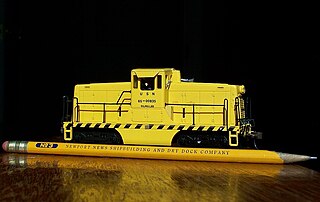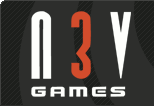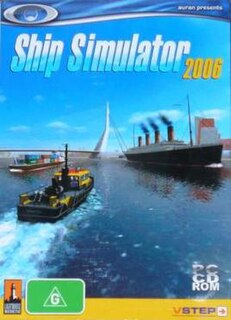Related Research Articles

Railway modelling or model railroading is a hobby in which rail transport systems are modelled at a reduced scale.

Microsoft Flight Simulator is a series of amateur flight simulator programs for Microsoft Windows operating systems, and earlier for MS-DOS and Classic Mac OS. It is one of the longest-running, best-known, and most comprehensive home flight simulator programs on the market. It was an early product in the Microsoft application portfolio and differed significantly from Microsoft's other software, which was largely business-oriented. At 39 years old, it is the longest-running software product line for Microsoft, predating Windows by three years. Microsoft Flight Simulator is one of the longest-running PC video game series of all time.

The National Model Railroad Association (NMRA) is a non-profit organization for those involved in the hobby or business of model railroading. It was founded in the United States in 1935, and is also active in Canada, Australia, the United Kingdom, and the Netherlands. It was previously headquartered in Indianapolis, Indiana, and was based in Chattanooga, Tennessee next to the Tennessee Valley Railroad Museum (TVRM) from 1982 to 2013 and has since relocated to Soddy Daisy.
Digital Command Control (DCC) is a standard for a system to operate model railways digitally. When equipped with Digital Command Control, locomotives on the same electrical section of track can be independently controlled.

O scale is a scale commonly used for toy trains and rail transport modelling. Introduced by German toy manufacturer Märklin around 1900, by the 1930s three-rail alternating current O gauge was the most common model railroad scale in the United States and remained so until the early 1960s. In Europe, its popularity declined before World War II due to the introduction of smaller scales.

HO or H0 is a rail transport modelling scale using a 1:87 scale. It is the most popular scale of model railway in the world. The rails are spaced 16.5 mm (0.650 in) apart for modelling 1,435 mm standard gauge tracks and trains in HO.

N scale is a popular model railway scale. Depending upon the manufacturer, the scale ranges from 1∶148 to 1∶160. In all cases, the gauge is 9 mm or 0.354 in. The term N gauge refers to the track dimensions, but in the United Kingdom in particular British N gauge refers to a 1∶148 scale with 1∶160 track gauge modelling. The terms N scale and N gauge are often inaccurately used interchangeably, as scale is defined as ratio or proportion of the model, and gauge only as a distance between rails. The scale 1∶148 defines the rail-to-rail gauge equal to 9 mm exactly, so when calculating the rail or track use 1∶160 and for engines and car wheel base use 1∶148.
S scale is a model railroad scale modeled at 1:64 scale, S scale track gauge is 22,48 (22,5) mm, 0.885 in. S gauge trains are manufactured in both DC and AC powered varieties. S gauge is not to be confused with toy train standard gauge, a large-scale standard for toy trains in the early part of the 20th century.

Gmax is an application based on Autodesk's 3ds Max application used by professional computer graphics artists. 3ds Max is a comprehensive modeling, animation and rendering package with some secondary post-production and compositing features. Gmax is much more limited due to its singular intended use—game content creation. Infrequently used tools and features, or the ones completely unrelated to creating 3D game models, were removed, leaving the core modeling, texturing, and basic animation rigging and keyframing capabilities. In 2005, the promotional freeware software was discontinued after version 1.2, but a licensed version is still available from TurboSquid.
Z scale is one of the smallest commercially available model railway scales (1:220), with a track gauge of 6.5 mm / 0.256 in. Introduced by Märklin in 1972, Z scale trains operate on 0–10 volts DC and offer the same operating characteristics as all other two-rail, direct-current, analog model railways. Locomotives can be fitted with digital decoders for independent control. Model trains, track, structures, and human/animal figures are readily available in European, North American, and Japanese styles from a variety of manufacturers.

Trainz is a series of 3D train simulator video games. The Australian studio Auran released the first game in 2001.

A train simulator is a computer based simulation of rail transport operations. They are generally large complicated software packages modeling a 3D virtual reality world implemented both as commercial trainers, and consumer computer game software with 'play modes' which lets the user interact by stepping inside the virtual world. Because of the near view modeling, often at speed, train simulator software is generally far more complicated and difficult software to write and implement than flight simulator programs.
Microsoft Flight Simulator began as a set of articles on computer graphics, written by Bruce Artwick throughout 1976, about flight simulation using 3-D graphics. When the editor of the magazine told Artwick that subscribers were interested in purchasing such a program, Artwick founded Sublogic Corporation to commercialize his ideas. At first the new company sold flight simulators through mail order, but that changed in January 1979 with the release of Flight Simulator (FS) for the Apple II. They soon followed this up with versions for other systems and from there it evolved into a long-running series of computer flight simulators.

Rail transport modelling uses a variety of scales to ensure scale models look correct when placed next to each other. Model railway scales are standardized worldwide by many organizations and hobbyist groups. Some of the scales are recognized globally, while others are less widespread and, in many cases, virtually unknown outside their circle of origin. Scales may be expressed as a numeric ratio or as letters defined in rail transport modelling standards The majority of commercial model railway equipment manufacturers base their offerings on Normen Europäischer Modellbahnen (NEM) or National Model Railroad Association (NMRA) standards in most popular scales.

RailDriver is a desktop cab controller for train simulation software. It replaces keyboard and mouse operation as far as possible to provide a more realistic train driving experience. It is designed to be compatible with Microsoft Train Simulator. N3V's Trainz, BVE Trainsim and World of Subways also support RailDriver. As of December 2020, Dovetail Games' Train Sim World 2 added an open beta for Raildriver on PC. Other software may be controlled using downloadable resources.
Train shunting puzzles, also often called railway shunting puzzles or railroad switching puzzles, are a type of puzzle.
Timesaver is a well-known model railroad train shunting puzzle created by John Allen. It consists of a specific track layout, a set of initial conditions, a defined goal, and rules which must be obeyed while performing the shunting operations.

N3V Games is an Australian video game developer and publisher based in Helensvale, Queensland, Australia. Auran is now operated as a holding company, with operations and development ceded to N3V Games, a different closely held company.
Microsoft Train Simulator 2 was a train simulation game in development by Microsoft Game Studios on two occasions. Meant to be the successor to Microsoft Train Simulator, it was originally announced in 2003, until being cancelled in 2004. The second attempt at the game was first announced on January 19, 2007, and originally scheduled for release in the last quarter of 2009. It was postponed indefinitely and virtually cancelled due to the closure of Aces Game Studio in 2009.

Ship Simulator is a ship simulator, a type of vehicle simulation computer game which simulates maneuvering various ships in different environments, although without the effects of wind and current. It was developed by Dutch company VSTEP and released by the former company Lighthouse Interactive, which closed down in 2009.
References
- ↑ Introduction to Vscale modeling, publisher: http://www.virtualrailroader.com, accessdate: 17 August 2013
- ↑ NMRA Standards
- ↑ THE NORMS
- ↑ Train Player - armchair model railroading
- ↑ Cohen, Peter (2009-04-09). "Virtual Railroading App Improves RailModeller Support". Macworld . Retrieved 2011-08-21.